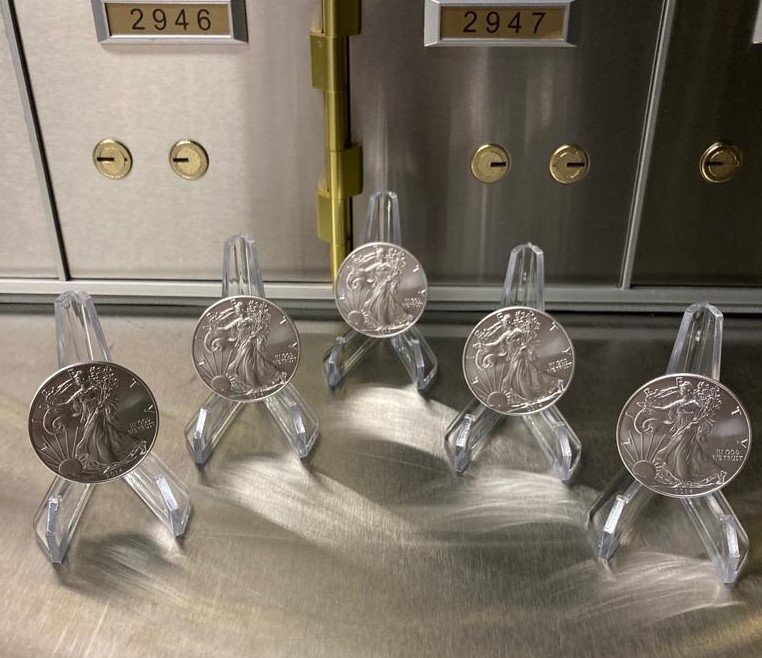Gold resilient as Central Banks race to hike rates
The latest consumer price index data revealed that the rate of U.S. inflation rose again in May to 8.6%, which marks a 40-year high. These inflationary pressures and a rapid rise in the cost of living are being felt by consumers across the globe as many households struggle to deal with the rapidly rising cost of living. The spike in prices, especially in energies and materials, impacts the average consumer’s purchasing power and leaves investors and savers nervous about what to do with their money. This is causing many inflation-wary investors to purchase gold as a hedge against inflation. With inflation at record highs our policy makers are under increased pressure to take action in an attempt to try and curtail the current fast paced rate of inflation. The main tool Central Banks have at their disposal to combat inflation is the use of contractionary monetary policy and increasing interest rates. Higher interest rates result in higher borrowing costs which in theory causes consumers to spend less which then reduces demand for goods and services and causes inflation to fall as the economy cools.
Central Banks take action
As the rate of inflation continues to grow so too does the speculation around whether central bankers have the wherewithal to get inflation under control or will it remain high for the coming years, ultimately to the detriment of the consumer. Central Bankers have now begun to act aggressively before a runaway level of inflation can hurt the consumer even more. Last week we saw Central Banks around the world rush to raise interest rates and take an overall aggressively hawkish stance as they unleash what may prove to be the most aggressive tightening of monetary policy since the 1980s. Last week the Federal Reserve hiked the federal funds rate by three-quarters of a percentage point, its largest rate increase since 1994, after policy makers were spooked by official data just a few days earlier which showed inflation unexpectedly rose despite expectations it had peaked. According to economists polled by Reuters, the FED are expected to deliver another 75-basis-point interest rate hike in July, followed by a half-percentage-point rise in September and are not expected to scale back these 0.75% hikes until November at the earliest.
The Bank of England also followed suit as they too raised interest rates for a fifth time in succession to tackle their inflation crisis which sees the rate of inflation heading towards 11% amid soaring household energy bills. The BOE raised its main interest rate from 1% to 1.25%, pushing it to the highest level in 13 years.
Even the Swiss central bank surprised markets with its first-rate hike since 2007. The Swiss National Bank raised its policy interest rate for the first time in 15 years last week, joining other central banks in tightening monetary policy to fight resurgent inflation which in turn sent the safe-haven franc sharply higher.
The European Central Bank’s governor recently said that the ECB intends to increase the interest rate by 25 basis points in July. Speaking at the European Parliament, Christine Lagarde said the bank may also make another raise in September. “The calibration of this rate increase will depend on the updated medium-term inflation outlook,” she added.
On the contrary, The Bank of Japan (BOJ) says it will continue its programme of purchasing large amounts of government bonds despite central banks in the US, UK and Switzerland taking the opposite approach of tightening monetary supply and sharply raising rates. “Raising interest rates or tightening monetary policy now would add further downward pressure on an economy that is in the midst of recovering from the COVID-19 pandemic’s pain,” BOJ Governor Haruhiko Kuroda said, brushing aside the chance of a near-term rate hike. So far this year the dollar has climbed by 15% against the yen, as the gap between interest rates in Japan and much of the rest of the world continues to grow.
Stagflation and the bullish case for Gold
However, the rapid rise in interest rates heightens the potential fears of a recession or indeed, a less likely but possible scenario of a stagflationary environment. Momentum is still behind the U.S. central bank doing more, not less, despite rising recession concerns and a steep sell-off in financial markets. Bond yields are up sharply and major Wall Street equity indexes are already trading in a bear market as they have pulled back more than 20% from their peak.
Some economists believe that this rate hiking cycle is also likely to be followed by a recession. In fact, Citigroup recently reported that it sees the chance of a global recession nearing 50%. Indeed, some analysts also foresee stagflation if a recession sets in before inflation has gone down to where the Fed wants it to be. Stagflation is a term coined in the 1970s when there was an excessive level of inflation experienced during an economic slowdown. Whether a modest recession is on the cards or whether we are indeed entering a period of stagflation is yet to be seen.
All in all, the successful or unsuccessful race to combat inflation before the economy begins to suffer has become a major theme and one that will determine the ultimate direction of the price of gold. Higher rates typically dent gold’s appeal as they increase the opportunity cost of holding non-yielding bullion.
However, gold rallied during the stagflationary environment in the 1970s. The price of gold surged during this period in late 1976 from slightly above $100 per ounce to around $650 in 1980, when the CPI annual rate reached its peak of 14 percent.

